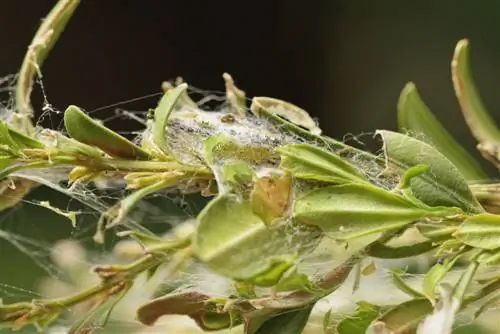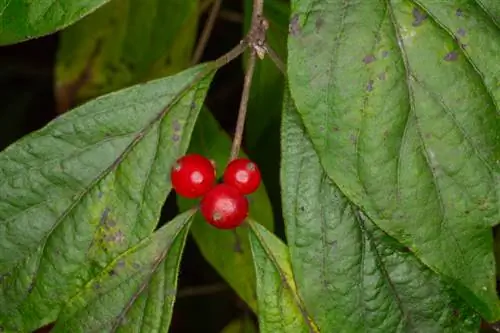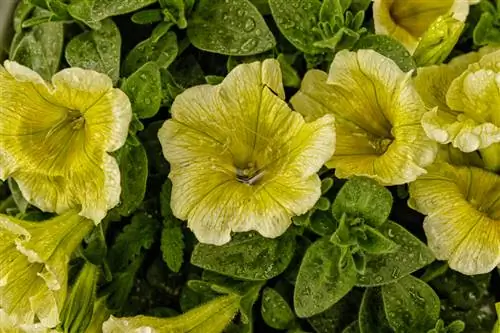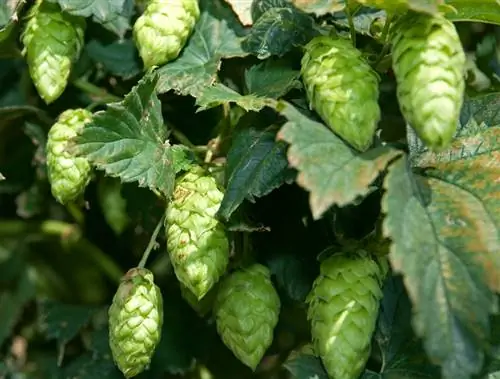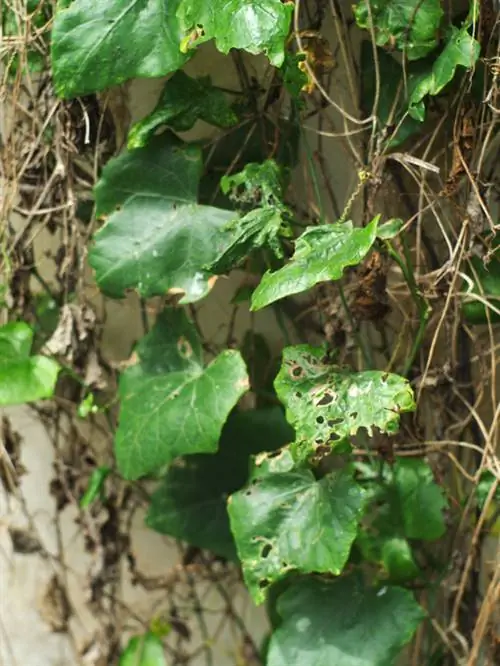- Author admin [email protected].
- Public 2023-12-16 16:46.
- Last modified 2025-01-23 11:21.
For centuries, the evergreen boxwood has been an indispensable part of European gardens: The tree, which tolerates pruning, is particularly popular as a high or low hedge or as a topiary. In particular, the common boxwood (Buxus sempervirens) with its estimated 60 varieties can be found in many gardens. The heat-loving shrub, which grows up to eight meters high, is comparatively easy to care for and hardy, but is also very susceptible to all kinds of diseases and pests.
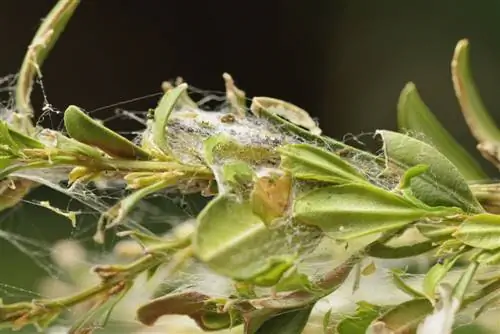
What diseases can affect a boxwood and how can they be prevented?
Boxwood diseases can be caused by fungi such as Cylindrocladium buxicola (shoot dieback), Volutella buxi (boxwood canker), Fusarium buxicola (boxwood wilt) and Puccinia buxi (boxwood rust). For prevention, an airy location, sufficient water and nutrient supply as well as careful pruning are crucial.
Diseases
When it comes to diseases, problems caused by various fungi dominate, many of which have only been on the rise for a few years and are threatening valuable stocks. Combating it is often difficult.
Boxwood shoot dieback (Cylindrocladium buxicola)
Probably the most feared disease of the boxwood is boxwood shoot dieback caused by the fungus Cylindrocladium buxicola, which initially manifests itself as rapidly increasing, dark brown spots on the leaves. At the same time, white spore deposits form on the undersides of the leaves, which are a clear identifying mark alongside the black stripes on the shoots. Later, leaves fall and shoots and entire parts of the plant die. Prevent the disease by taking the following measures:
- Choose an airy, bright location if possible.
- Ensure an adequate and balanced supply of water and nutrients.
- Always water the boxwood from below, never wet the leaves.
- Do not prune boxwood in warm, humid weather, this promotes fungal infestation.
The varieties 'Suffruticosa' and 'Blauer Heinz' are particularly susceptible to this disease; instead, you can plant less sensitive versions of the small-leaved boxwood (Buxus microphylla), such as the popular variety 'Faulkner'.
Boxwood crab (Volutella buxi)
Incorrect pruning or the use of contaminated garden tools and cutting tools spreads the fungal pathogen Volutella buxi, which causes the so-called boxwood canker. You acknowledge an infection
- initially lying and twisted leaves
- These initially turn brown and then fall off.
- Later, whole branches dry up.
- Orange pustules also develop.
- Spore deposits can be seen on the undersides of leaves and shoots.
In the event of an illness, you should cut the affected plant back deep into the he althy wood and dispose of the infectious cuttings with household waste.
Boxwood wilt (Fusarium buxicola)
In contrast to other fungal diseases, boxwood wilt caused by the fungus Fusarium buxicola is usually limited to individual parts of the plant. These initially show a yellow discoloration and then die off. Typically, dark, soft areas can also be seen on the bark. As a rule, it is completely sufficient to cut out the affected areas.
Boxwood rust (Puccinia buxi)
The rarely occurring boxwood rust mainly affects older stands of the common boxwood (Buxus sempervirens). An infection initially remains inconspicuous for a long time because the fungus that causes it, Puccinia buxi, is initially limited to the inside of the plant. The leaf tissue initially only shows thickening, but the rust-red, conspicuous spore deposits only appear months later. They appear primarily in autumn. Infected plant parts are highly infectious and should be removed and disposed of immediately.
Pests
Leaf sap-sucking lice, mites and fleas are often found on boxwood. To prevent an infestation, you should ensure optimal location and growth conditions. Pests primarily colonize weakened specimens. Many of the animals listed here overwinter directly on the plant, usually in egg or larval form. Effective control therefore involves cutting back infected boxwood trees before the larvae hatch in spring. This should be done by mid-May at the latest.
Box tree moth (Glyphodes perspectalis)
The box tree borer, introduced from East Asia, has only been active for a few years, but is a massive threat to the box tree. The larvae of the small butterfly, which only live for a few days, are particularly damaging to plants and eat the plants bare within a short period of time. Since the green caterpillars live inside the bush, an infestation is often only noticed very late. Control is difficult because numerous generations hatch each year and plants are repeatedly attacked even after successful treatment. The following measures have proven particularly effective:
- Remove caterpillars using a high-pressure cleaner, leaf blower or vacuum cleaner
- Applying the bacterium Bacillus thuringiensis, which kills the caterpillars
- However, good timing is required here as this does not work every time.
Dusting the entire plant with algae lime also shows good short-term results.
Boxwood leaf flea (Psylla buxi)
If the young leaves at the tips of the shoots roll up into a cup shape - the so-called "spoon leaf" - this is a typical feature of an infestation by the common boxwood psyllid. The adults lay their eggs in the leaves of the boxwood in summer, where they overwinter and the larvae hatch from them in the following spring. If there is an infestation, the affected plant parts should be cut off in late summer or autumn.
Boxwood spider mite (Eurytetranychus buxi)
The box tree spider mite, which has also only appeared for a few years, only appears in dry and hot summers. It can be easily combated with predatory mites and with preparations based on neem or rapeseed oil. Clearly visible, yellowish galls in the leaves, on the other hand, are a sign of an infestation with the gall mite (Monarthropalpus buxi), which should be pruned vigorously in spring.
Tip
To save yourself the hassle of diseases and pests, you can also choose similar plants such as barberry or privet instead of boxwood.

